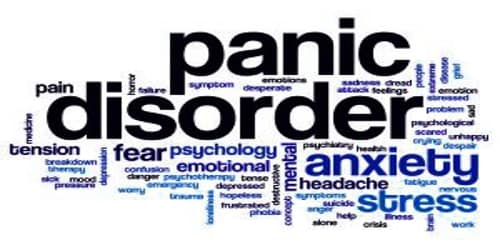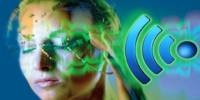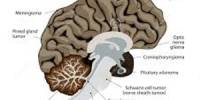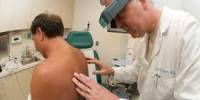Panic Disorder
Definition: Panic disorder is a type of anxiety disorder that is characterized by unexpected and repeated episodes of intense fear accompanied by physical symptoms that may include chest pain, heart palpitations, shortness of breath, dizziness, or abdominal distress. The DSM-5 defines panic attacks as abrupt surges of intense fear or discomfort that peak within minutes. People with the disorder live in fear of having a panic attack.
The maximum degree of symptoms occurs within minutes. There may be ongoing worries about having further attacks and avoidance of places where attacks have occurred in the past.
Most people experience a panic attack once or twice in their lives. The American Psychological Association reports that 1 out of every 75 people might experience a panic disorder. Panic disorder is characterized by persistent fear of having another panic attack after people have experienced at least one month (or more) of persistent concern or worry about additional panic attacks (or their consequences) recurring.
The cause of panic disorder is unknown. Panic disorder often runs in families. Risk factors include smoking, psychological stress, and a history of child abuse. Diagnosis involves ruling out other potential causes of anxiety including other mental disorders, medical conditions such as heart disease or hyperthyroidism, and drug use. Screening for the condition may be done using a questionnaire.
Panic disorder is more common in women than men. It usually starts when people are young adults. Sometimes it starts when a person is under a lot of stress. Most people get better with treatment. Therapy can show them how to recognize and change their thinking patterns before they lead to panic. Medicines can also help.
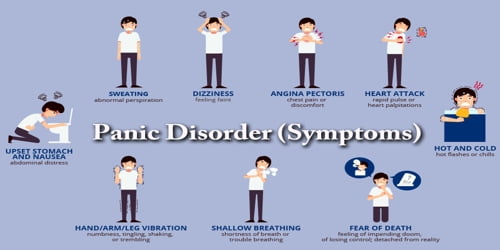
Causes, Signs, and Symptoms of Panic disorder: The causes of panic disorder are not clearly understood. Research has shown that panic disorder may be genetically linked. Panic disorder is also associated with significant transitions that occur in life. Leaving for college, getting married, or having people’s first child are all major life transitions that may create stress and lead to the development of panic disorder. Panic disorder affects about 2.5% of people at some point in their life.
Panic disorder sufferers usually have a series of intense episodes of extreme anxiety during panic attacks. These attacks typically last about ten minutes, and can be as short-lived as 1–5 minutes, but can last twenty minutes to more than an hour, or until helpful intervention is made. Some research suggests panic attacks occur when a “suffocation alarm mechanism” in the brain is activated, falsely reporting that death is imminent.
Common symptoms associated with a panic attack include:
- racing heartbeat or palpitations
- shortness of breath
- feeling like people are choking
- dizziness (vertigo)
- lightheadedness
- nausea
- sweating or chills
- shaking or trembling
- changes in mental state, including a feeling of derealization (feeling of unreality) or depersonalization (being detached from oneself)
- numbness or tingling in their hands or feet
- chest pain or tightness
- fear that people might die
Studies investigating the relationship between interoception and panic disorder have shown that people with panic disorder feel heartbeat sensations more intensely when stimulated by pharmacological agents, suggesting that they experience heightened interoceptive awareness compared to healthy subjects.

Diagnosis and Treatment of Panic disorder: The DSM-IV-TR diagnostic criteria for panic disorder require unexpected, recurrent panic attacks, followed in at least one instance by at least a month of a significant and related behaviour change, a persistent concern of more attacks, or a worry about the attack’s consequences. There are two types, one with and one without agoraphobia. Diagnosis is excluded by attacks due to a drug or medical condition, or by panic attacks that are better accounted for by other mental disorders.
Treatment for panic disorder includes medication, psychotherapy or a combination of the two. Cognitive-behavioural therapy, a type of psychotherapy, teaches people how to view panic attacks differently and demonstrates ways to reduce anxiety. Appropriate treatment by an experienced professional can reduce or prevent panic attacks in 70 to 90% of people with panic disorder. Most patients show significant progress after a few weeks of therapy. Relapses may occur, but they can often be effectively treated just like the initial episode.
Medications used to treat panic disorder can include selective serotonin reuptake inhibitors (SSRIs), a class of antidepressant. SSRIs prescribed for panic disorder may include:
- fluoxetine
- paroxetine
- sertraline
Other medications sometimes used to treat panic disorder include:
- serotonin-norepinephrine reuptake inhibitors (SNRIs), another class of antidepressant
- antiseizure drugs
- benzodiazepines (commonly used as tranquillizers), including diazepam or clonazepam
- monoamine oxidase inhibitors (MAOIs), another type of antidepressant that is used infrequently because of rare but serious side effects
For some people, anxiety can be greatly reduced by discontinuing the use of caffeine. Anxiety can temporarily increase during caffeine withdrawal.
In 2000, the World Health Organization found prevalence and incidence rates for panic disorder to be very similar across the globe. Age-standardized prevalence per 100,000 ranged from 309 in Africa to 330 in East Asia for men and from 613 in Africa to 649 in North America, Oceania, and Europe for women.
Information Source:
